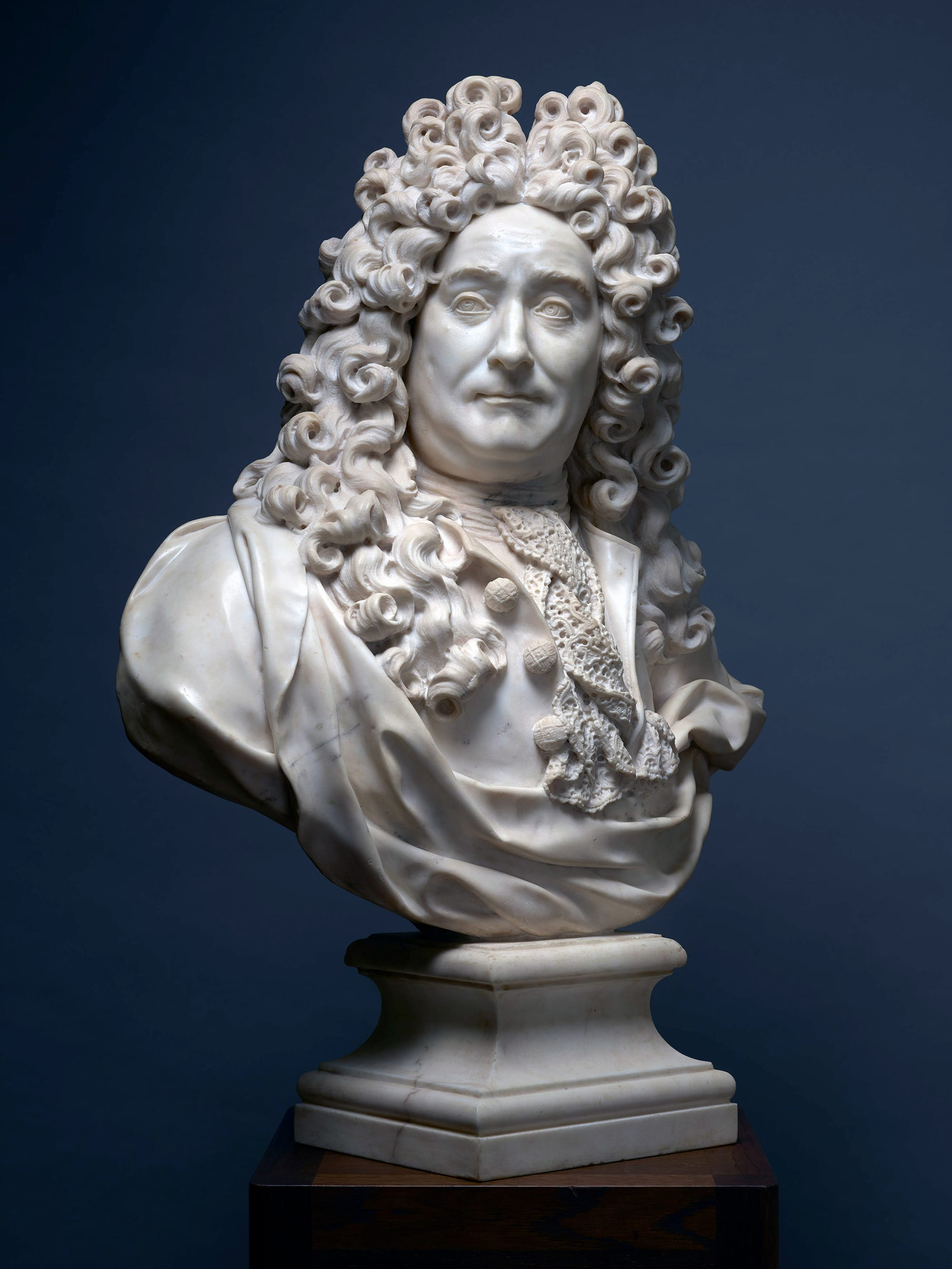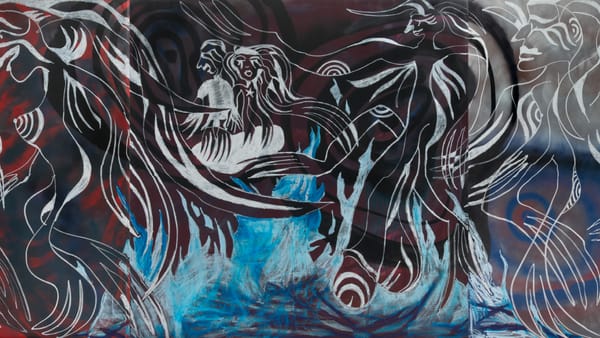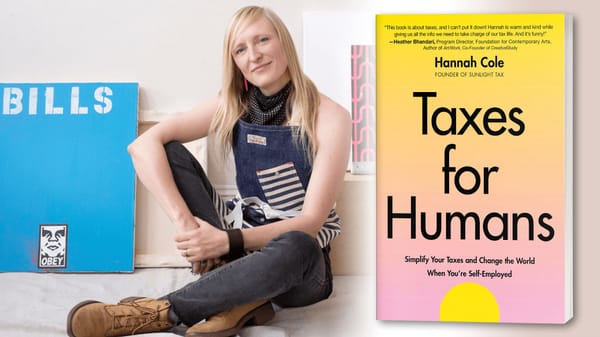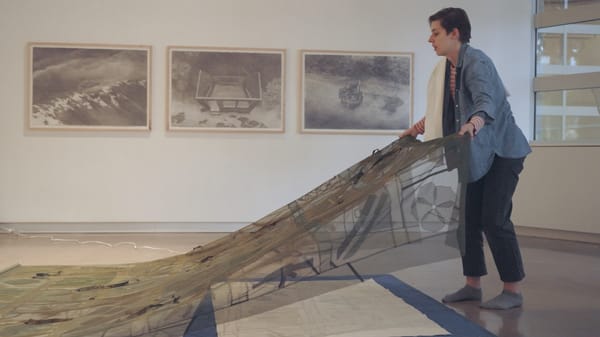Required Reading
This week, Bad Art Friends, framing Latinx art, "Don't Ask, Don't Tell" the comic, Facebook's continuing problems, and more.

- If you haven't read the Bad Art Friend story in the New York Times by Robert Kolker, then I suggest you do that right now because no one was talking about anything else in literary circles in New York and elsewhere. Here's a taste:
This had become Sonya Larson’s summer of hell. What had started with her reaching heights she’d never dreamed of — an entire major American city as her audience, reading a story she wrote, one with an important message about racial dynamics — was ending with her under siege, her entire career in jeopardy, and all for what she considered no reason at all: turning life into art, the way she thought that any writer does.
Larson had tried working the problem. When, in June, an executive from the book festival first came to her about Dorland, Larson offered to “happily” make changes to “The Kindest.” “I remember that letter, and jotted down phrases that I thought were compelling, though in the end I constructed the fictional letter to suit the character of Rose,” she wrote to the festival. “I admit, however, that I’m not sure what they are — I don’t have a copy of that letter.” There was a moment, toward the end of July, when it felt as if she would weather the storm. The festival seemed fine with the changes she made to the story. The Globe did publish something, but with little impact.
Related: If you want a Bad Art Friend dress or tee, here you go.
- Writing in the New York Review of Books, Carolina Miranda tackles the triennial at El Museo del Barrio. It really goes deep into the framing of Latinx art:
But obscuring Blackness and Indigeneity is at the very root of Latinidad, which privileges an identity that, though mixed, is always firmly rooted in the European. Vasconcelos said as much in “La raza cósmica.” He may have rhapsodized about mestizaje, but he by no means viewed the existing races as equal. He celebrated the Christian evangelization of Indigenous people, which he claimed brought them out of “cannibalism into relative civilization” in just “a few centuries.” (And, as Mexico’s secretary of education, he disapproved of teaching Indigenous schoolchildren in their native languages.) He described Asians as “reproducing like mice.” In the utopia he envisioned, Black people would be completely absorbed into the new fifth race — i.e., disappeared through miscegenation. Vasconcelos is clear that his cosmic race is less a true hybrid than a mixture in which a lot of Spanish includes a few dashes of other races.
In truth, in Latin America, identity is not one, but many: Black, white, Indigenous, Asian, mestizo, and various permutations thereof—with ethnicity, language, sexuality, gender, and national identities also critical to determining how individuals see themselves. As in the US, systemic racism has kept those who aren’t fair-skinned or those who don’t acculturate on the margins. The UN Refugee Agency’s human rights reports on Latin America are primers in the disenfranchisement of Black people and the dispossession of Indigenous people from their lands. But you don’t need to read bureaucratic reports to figure that out. Simply tune your television to a Spanish-language channel — you’ll see who is held up as the ideal. Latinidad as a concept may be predicated on mestizaje, but in practice it is bound by whiteness.
- If you've never seen it, the US Army's "Don't Ask, Don't Tell" comic from 2001 is available online and boy is it weird.
- Choire Sicha writes about an architecture professor at Princeton University who was forced to leave because of unusual circumstances:
An architecture professor said he has been dismissed from Princeton University after a long investigation, and so has published a multimedia polemic mostly about himself but also, he writes, about the downfall of American academia. It is an extremely pure example of low-stakes-yet-high-drama academic-workplace nightmares.
- A good warning thread to remind us that political violence is often about an active minority committed to revolution:
- Facebook was being grilled this week in the US Congress, and this comes after a major WSJ series on the company in the previous week. The one piece you need to read this week is Kara Swisher's opinion about all of it, and she has included a short (but important) interview with Alex Stamos, the director of the Stanford Internet Observatory and a former head of security at Facebook. Here is the snippet of the interview:
The structure of disinformation in the United States has evolved, and during the 2020 election and the Covid crisis multiple studies have shown that the driver of disinformation in the United States is not bots, Russian trolls or small-time accounts, but the verified American influencers who can decide to make a piece of disinformation part of the national conversation with a single reshare.
You can’t avoid the fact that the owner of The Wall Street Journal, News Corporation, is not only one of the most important purveyors of disinformation in the United States but likely one of the most destructive drivers of political polarization in the Anglophone world over the last four decades. This isn’t the fault of the good journalists behind this latest crop of stories about Facebook, and it doesn’t relieve Facebook or other tech companies of their responsibilities, but when I see the Journal paying to promote these stories on Twitter or their DC lobbyist crowing about the revelations, it is hard to ignore the hypocrisy.
Related: Nathaniel Persily's opinion on Facebook is also worth a read.
- A TikTok video breaks down director Tim Burton's anti-Blackness:
https://vm.tiktok.com/ZM81N5Lo3/
- Jay Caspian Kang writes about the "myth of Asian American identity" for the New York Times:
Every few months I come across assimilated Asian men venting on social media about the time one of their white neighbors in buildings just like mine in Brooklyn mistook them for delivery men, inevitably followed by a firm statement of their credentials: “I guess he didn’t know, I am a journalist/doctor/lawyer/hedge-fund manager!” It’s embarrassing for both sides when this happens, but the implication has always felt so bizarre to me; the real offense is being mistaken for being poor. What sets modern, assimilated Asian Americans apart, when it comes to these sorts of differentiations made by so many immigrant groups, is that our bonds with our brothers and sisters are mostly superficial markers of identity, whether rituals around boba tea, recipes or support for ethnic-studies programs and the like. Indignation tends to be flimsy — we are mad when white chefs cook food our parents cooked, or we clamor about what roles Scarlett Johansson stole from Asian actors. But the critiques generally stay within those sorts of consumerist concerns that do not really speak to the core of an identity because we know, at least subconsciously, that the identity politics of the modern, assimilated Asian American are focused on getting a seat at the wealthy, white liberal table. Or, if we want to be generous, we fight about food and representation and executive-suite access because we want our children to live without really having to think about any of this — to have the spoils of full whiteness.
- Guess who helped establish the far-right One American News Network (OANN)? Reuters found AT&T has a big role. John Shiffman reports:
After this story was published, AT&T issued a statement saying it has “never had a financial interest in OAN's success and does not 'fund' OAN.”
Although the contracts are confidential, in court filings Herring cited monthly fees included in one five-year deal with AT&T. According to an AT&T filing citing Herring’s numbers, those fees would total about $57 million. Greer said that figure is inaccurate, but declined to say how much AT&T has paid to air OAN, citing a non-disclosure agreement.
Herring and his adult sons own and operate OAN, a subsidiary of their closely held San Diego-based Herring Networks. Their AT&T deal includes Herring’s other network, a little-watched lifestyle channel, AWE. The Herrings declined interview requests.
Herring, who just turned 80, is a self-made businessman who amassed a fortune in the circuit board industry, then turned to television and boxing promotion. OAN’s influence rose in late 2015, when it began covering Trump rallies live, at a time when some of the media still saw the New York celebrity businessman as a longshot presidential contender. The network continues to shower Trump with attention and often provides a friendly platform for his Republican allies.
As president, Trump frequently urged supporters to watch OAN. In his final two years in office, Trump touted the network, known as @OANN online, to his 88 million Twitter followers at least 120 times.
- Oh, Fresno:
- Wow, amazing:
- What a world (btw 2.23 eth is roughly $8,000):
Required Reading is published every Thursday afternoon, and it is comprised of a short list of art-related links to long-form articles, videos, blog posts, or photo essays worth a second look.





